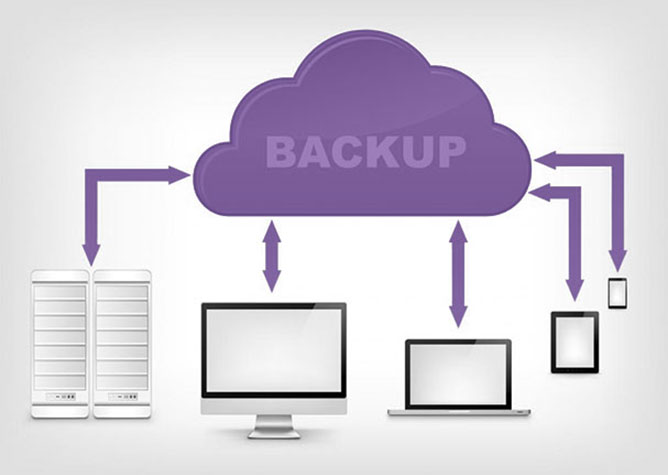Photography has advanced quite considerably over the last decade with the rise of digital technology and whilst it has made our lives easier, it has also had the reverse effect and made our lives more complex.
For example the process of once cataloging our film negatives prior to sending them to the lab for printing may have been time intensive, but was relatively easily understood. But now with the rise of digital photography the process of cataloging has become more complex which can easily lead to confusion, overwhelm and disorganisation.

So how do we take the complexity of technology and simplify it by creating systems that take full advantage of automation, saving your photography business time and money.
In this article you’re going to learn what is digital asset management (DAM), why is it important and how to get started creating systems and processes to manage your digital photography workflow.
So, What Is Digital Asset Management Or DAM?
Digital asset management is a fancy term that simply refers to everything a photographer does with his or her files from the moment they capture an image up until the moment they have successfully finished working with an image. This workflow may include tasks like transferring and renaming of files, adding metadata and keywords, filtering and selection, rating, adjusting and editing, proofing and printing, backing up and archiving… the list goes on.
Why Is Digital Asset Management So Important To Your Photography Business?
There are many reasons behind why you should have a process or system in place to assist in managing your digital media and in this article I’m going to discuss what I believe to be the top five reasons why digital asset management is an absolute necessity if your photography business is going to survive into the future.
Reason 1 – Organization & Tracking
Digital photography has given photographers the ability to capture vast amounts of images in a short space of time. The amount of images you can capture is only limited by the size of storage media or memory card/s you insert into your digital camera and whilst this has it’s advantages, it also creates a significant problem of how to effectively manage, organize and keep track of all those additional images. Without a system in place that helps to simplify this process you’ll find it extremely hard to scale your photography business, only able to manage a limited number of photoshoots before becoming overwhelmed.
Reason 2 – Storage, Backup & Retrieval
Without a doubt storing, backing up and retrieving your photographs is crucial to the life blood of your photography business. You need to be able to safely retrieve your clients photo shoots if you encounter an emergency which could easily come in the form of hardware failure, computer theft, fire or water damage etc.

Backing up your files solely to an external hard drive locally is just asking for trouble (even if they’re mirrored). You need to backup your files externally off site using something like cloud storage in order to be truly covered in an emergency.
Reason 3 – Employee & Outsourcing Management
Most photographers are prepared to do all the work by themselves, but for those who wish to make more money, do so by hiring an employee or outsourcing particular tasks. If you choose to invest in extra help and wish to do so effectively you will need systems or processes in place.
Systems will not only make your employees or outsourcers more productivity, but they will also make your life as a business owner easier too. Investing time teaching an employee or outsourcer how to execute can be extremely expensive and what happens when the hired help leaves? With an effective system in place, new employees can simply pick up where your last employee finished and follow a process map or checklist to complete the task at hand.
Reason 4 – Consistency & Quality Of Work
As business owners we all strive for quality in our products and services which is crucial if we want to attract repeat customers. In order to achieve and maintain a consistency level of quality it is essential that you and your employees follow a process or system that is repeatable and predictable.

Without systems it will be incredibly difficult to manage all of your digital media in an effective manner that allows for business growth and scalability, whilst still maintaining quality across the board.
Reason 5 – Client Experience & Relationship Management
So how does digital asset management affect your ability as a business owner to deliver a perfect client experience? …and how will it affect your client relationships?
In a perfect world your business would run smoothly, without mishaps and every one of your clients would be extremely happy with your products and services.
But unfortunately we don’t live in a perfect world and you will likely come across a variety of issues with your clients. For example, one common request I received from previous clients is for the retrieval of photos that the client has lost or damaged. Without having a system in place for searching, identifying and retrieving clients work (anywhere from a few months to a couple years) could potentially upset your client relationship, hindering any chance of future work or referrals.
Now of course you should instruct all of your clients on how long you intend on storing their photography before deletion. Photographers often neglected or forget to include any future expenses associated with storing a clients photography in the original cost of their products or services. Remembering that even though hard drives are becoming less expensive, there is still a long cost associated with running and maintaining an effective storage system and therefore you should take this into consideration when reassessing your pricing.
So Now I Know Why, What Should I Do Next?
The next step in this process is to work out the requirements for your photography business and then decide which solution that will best meet all of those requirements.

Lightroom is the most common and accepted solution for photographers for obvious reasons… however there are other options available photographers such as:
- Adobe Lightroom – https://www.adobe.com
- Phase One Media Pro – http://www.phaseone.com
- Extensis Portfolio – http://www.extensis.com
- Daminion Photo Management – http://daminion.net
- Fotoware Fotostation – http://www.fotoware.com
- Canto Cumulus – http://www.canto.com
Most of the above solutions mentions are excessive for the average, individual photographer, however it’s still useful to know what options are available to you which will help make the decision process a little easier.
Backing Up & Archiving Files
The average photographer may have a laptop or desktop computer which is then backed up to an external hard drive usually within the same working space. This is a common mistake photographers make because not only can your hardware be easily stolen, it could technically fail or in the event of fire or storms could be easily damaged.
But if you want to take the future security of your photography business seriously you need to also back up your photography to an external source that isn’t located in your house.

Therefore I recommend you use some kind of cloud based storage and for this there are many options available. Here is a list of the most well known services worth looking at:
- Crashplan – http://www.crashplan.com
- Dropbox – https://www.dropbox.com
- Sugarsync – https://www.sugarsync.com
- Mosaic – http://www.mosaicarchive.com
- Smugmug – http://www.smugmug.com
- Photoshelter – http://www.photoshelter.com
What If I Don’t Want To Do All The Extra Work Or Simply Can’t Afford Digital Asset Management For My Business?
Creating systems and process for your photography business will take time, but in the long term will saving you money. If you’re not prepared to invest time or money for that matter, you’re clearly going to be an inconsistent, ineffective photographer that doesn’t generate enough income to support a business. Therefore I suggest you focus on improving your business, instead of restricting it.
In this article you’ve learned what is digital asset management, why is it important to your photography business, what solutions are available to you and your business. Good luck!














Annabella, nice overview of D.A.M. I especially like Reason 3, Employee Outsourcing Mgmt. Once doesn’t come across that reason often when reading about digital asset management systems. Yet it can be huge benefit.
I know that organizations from small photographer businesses to government agencies and non-profit businesses outsource portions of image management. Often it’s just to do tagging of images. Sometimes it’s about categorizing them, or grouping related images.
One reason clients of DBGallery, the DAM system for which I am product manager, love it is because it provides the ability to open the asset collection to outsiders, be they volunteers, work-term students, or outsourcing companies. It allows restrictions of which folders and collections they have access to, and even what they can do there. Once they’re finished their work, it’s sometimes configured with a status of Ready to Publish, at which point the internal manager moves them to published folders. Opening a image/asset collection can be a huge benefit of having the collection available in the cloud and shouldn’t be quickly discarded.
Thank you Glenn for your helpful comment, I really appreciate it 🙂
I wish Google Photos had more features and could opperate as a Digital Asset Management app.
At the moment it’s so close, but can’t be used easily at an Enterprise level. Eg. Folder structure, tags etc.
What would you suggest for a company with 100,000 photos?
Thank you for your comment Alex, I would probably recommend “Phase One Media Pro” or something similar to manage large photo libraries.